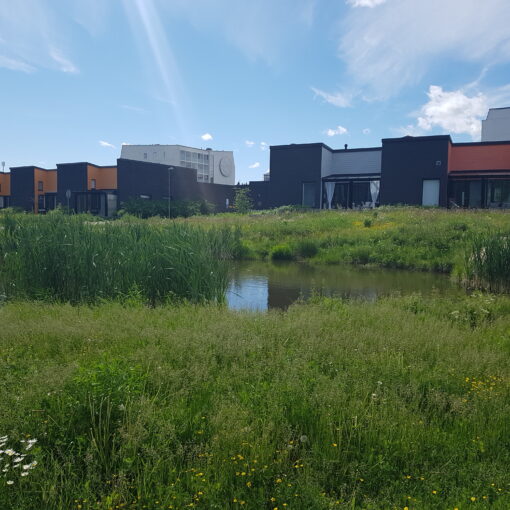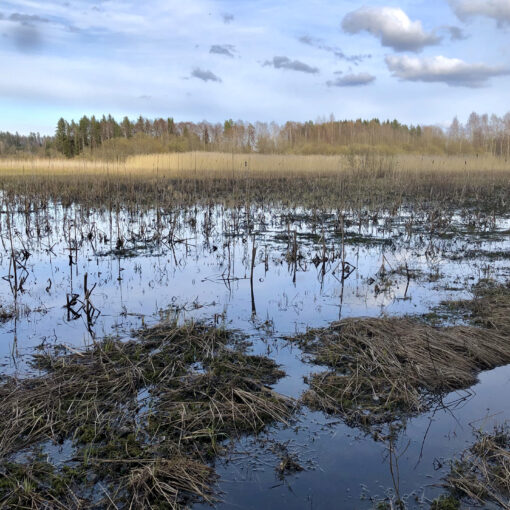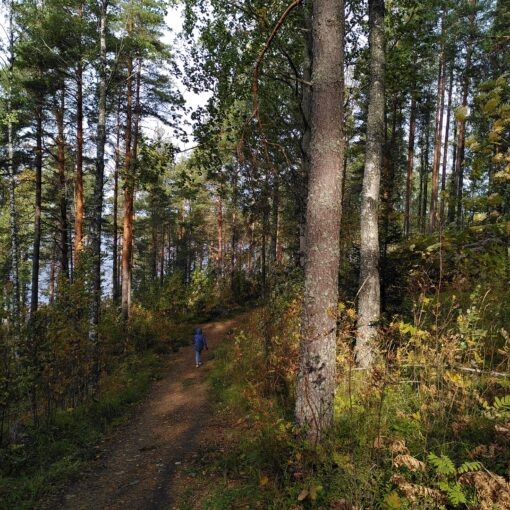In the summer of 2020, the City of Tampere monitored biodiversity in the pilot sites of the EU-funded UNaLab project in Hiedanranta, Vuores and Viinikanlahti. The goal of the monitoring is to measure the ability of new types of urban nature, such as biofilters, paddocks and green walls, to maintain regional biodiversity.
In Vuores, insects, pollinators and vegetation were monitored in three areas. One of the areas in Vuores is occasionally used as a paddock. In Hiedanranta, pollinators were monitored in a biofilter area and an adjacent meadow, and in Viinikanlahti, monitoring was carried out in a meadow-like wasteland where a green wall is planned to be built.
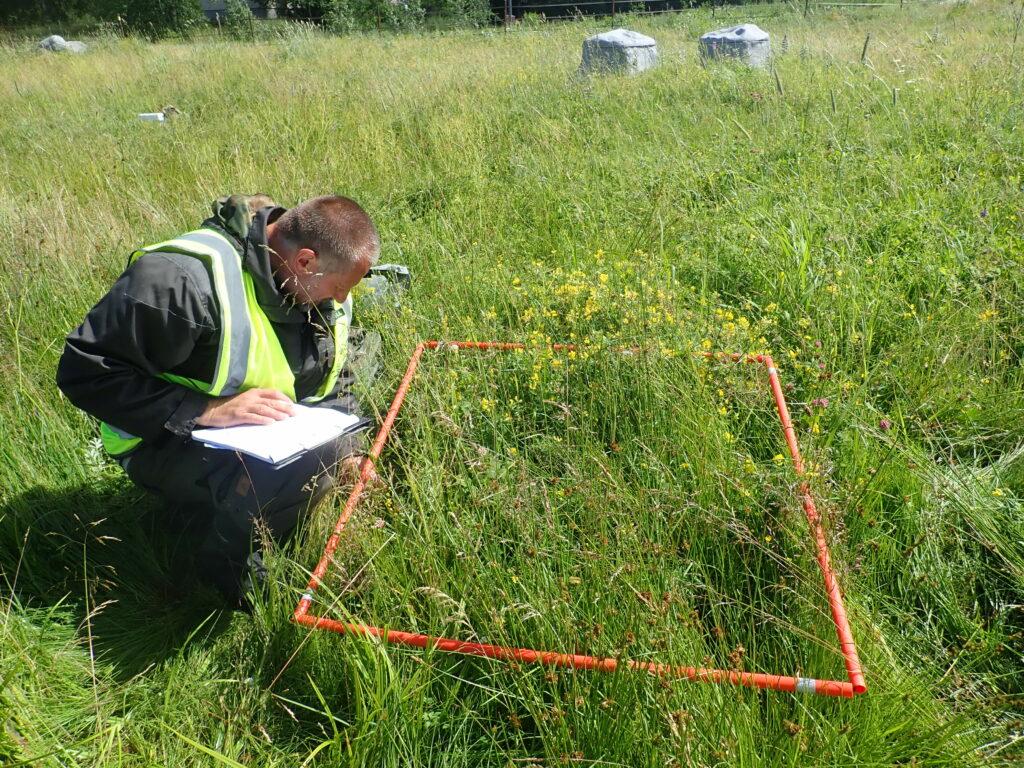
Vegetation diversity varied across different meadows in the same area
The vegetation surveys of Vuores and Viinikanlahti were carried out by first establishing three plant squares in the selected survey areas. The plant species, total plant cover and height of the vegetation in the plant squares were identified, and other species common to the area were recorded as well.
The Vuores survey showed that the number of plant species in the survey area at the beginning of July varied between 23 and 37. In the most species-rich meadow, one of the dominant species was garden lupine, which is classified as an invasive introduced species, while in the least species-rich meadow, lupine did not grow. If the spread of lupine continues, it will reduce the species diversity of plants throughout the area. In contrast, 23 different plant species were found in the Viinikanlahti survey area at the time of the measurement.
In Hiedanranta, flowering species were recorded instead of monitoring plant squares. However, the meadow had been mowed prior to the recording, which reduced the number of flowering plants. In other words, mowing performed at a later date would have been preferable for the flowering plants and pollination.
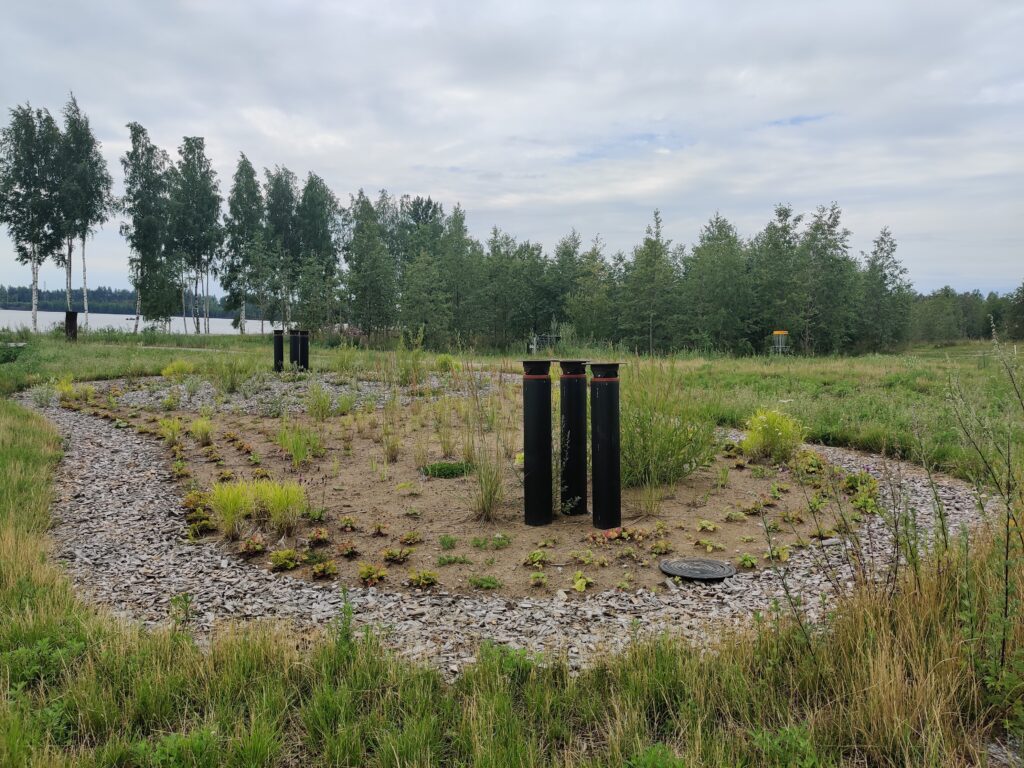
Pollinator abundance is explained by the abundance of plants favoured by pollinators
During the summer, pollinator monitoring was carried out on three survey visits. The monitoring showed that the number of bees and bumblebees increased as expected in all survey areas over the course of the summer, while the number of butterflies and flies remained fairly unchanged.
On the basis of the monitoring, it can be concluded that the abundance of plants favoured by pollinators contributes to the abundance of pollinators. On the other hand, the diversity and balance of plant species has the greatest impact on diversity within the pollinator community.
The survey also showed that introduced species must be kept out of the area in order to preserve pollinator diversity. Controlling introduced species is also important to prevent wild species, such as meadow flowers, from having to compete with aggressively spreading species for pollinators.
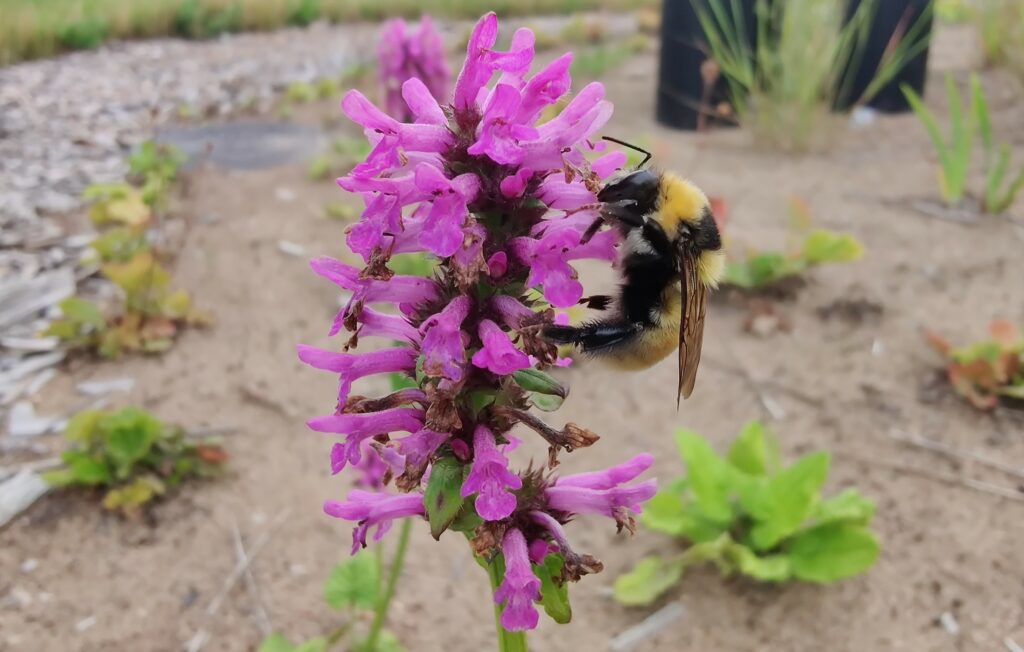
In addition to pollinators, insects were monitored in Vuores. Bed bugs were the most abundant species among insects, and their diversity peaked in the paddock. The diversity of the bed bug community in certain survey areas is explained by the species diversity of plants, among other factors.
Biodiversity must be protected in densifying cities
The preliminary results of the survey show that the reference areas, such as the meadow-like wasteland, have a diverse range of plant species, which increases the diversity of pollinators and other insects.
Biodiversity can be supported by ensuring the growth of plant species that are favoured by pollinators. Diversity can also be promoted with properly timed mowing and controlled grazing.
The control of introduced species must be improved, for example, by ensuring the quality of substrates used in landscaping, by raising awareness about introduced species and by engaging volunteers in participating in control measures.
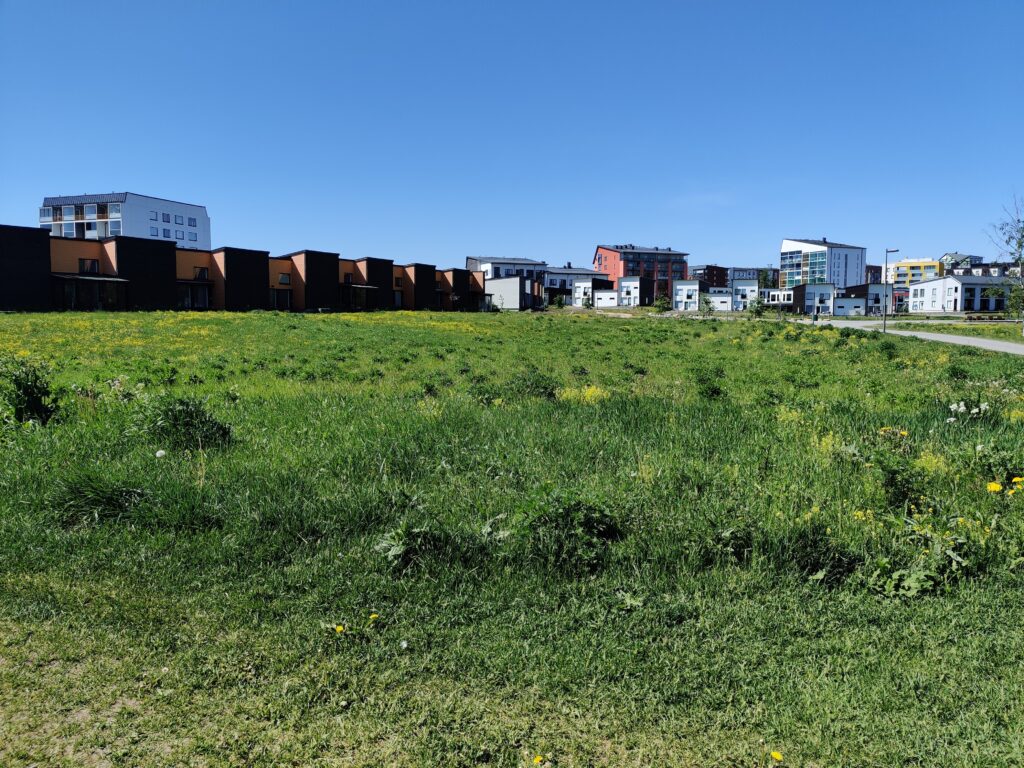
Preserving urban green areas is important, particularly as cities are growing and densifying. The green areas in the area should serve a number of purposes, such as detaining and purifying stormwater, providing a revitalising local environment for residents and supporting biodiversity.
In the summer of 2022, pollinator and vegetation monitoring will be carried out in Hiedanranta, pollinator, vegetation and insect monitoring will be carried out in Vuores and pollinator monitoring will be carried out on a green wall in Viinikanlahti, the results of which will be compared to the meadow material collected in previous years. The monitoring at the pilot sites is part of the more extensive biodiversity work done by the City of Tampere.
Further information
The biodiversity program 2021-2030 of the City of Tampere (In Finnish)

